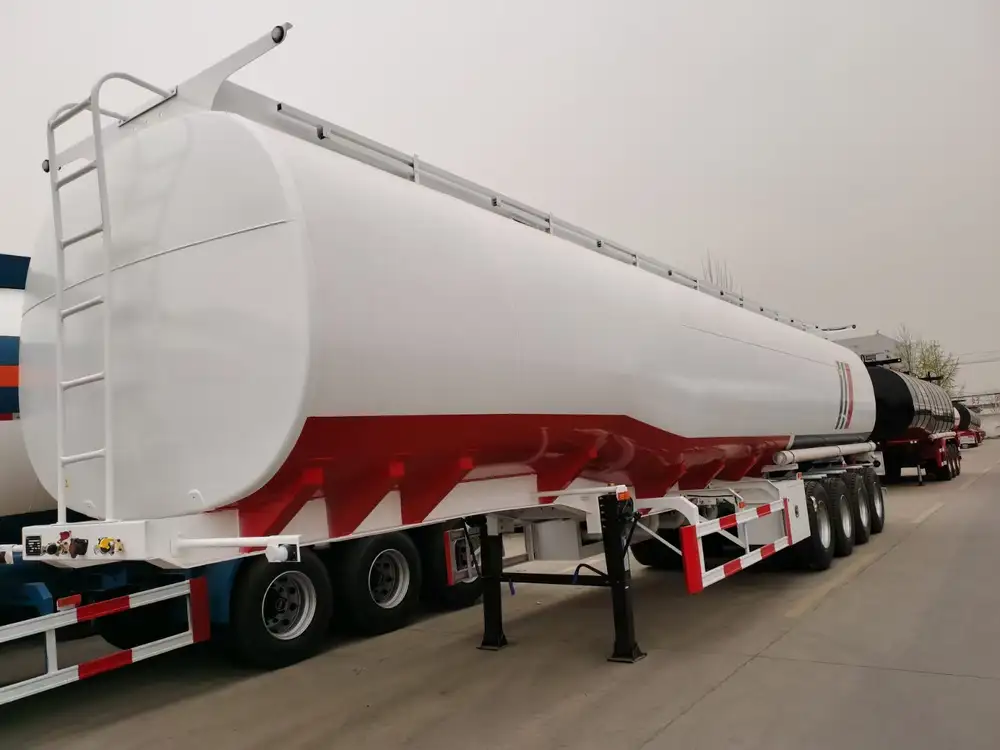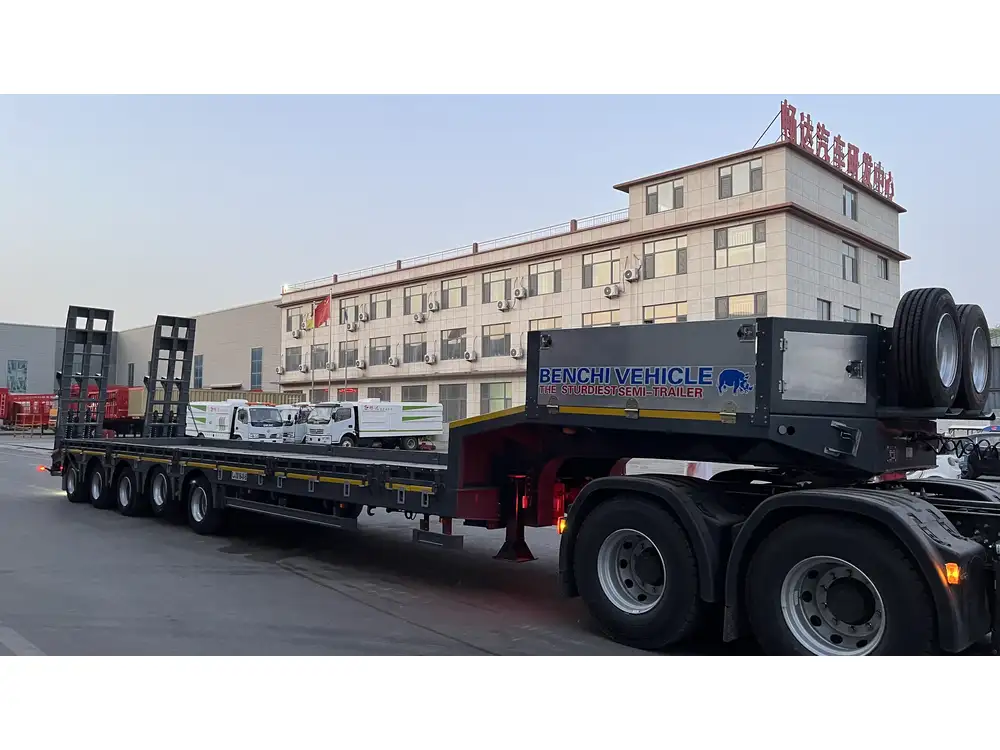In the vast and intricate world of livestock transportation, few vehicles play as pivotal a role as the semi cattle trailer. These trailers are designed to ensure the safe and efficient transport of livestock, primarily cattle. One of the most frequent queries from our clients revolves around the configuration of these trailers, specifically, “how many decks are in a semi cattle trailer?” This article delves into the various aspects of deck configurations, helping you navigate your choices effectively.
What is a Semi Cattle Trailer?
A semi cattle trailer is an essential component of the livestock transport industry. It is specifically engineered to accommodate live animals, ensuring their comfort and safety during long hauls. Constructed from durable materials, these trailers feature specialized designs to facilitate the easy loading and unloading of livestock while adhering to the highest standards of animal welfare.
Key Features of Semi Cattle Trailers
| Feature | Description |
|---|---|
| Material | Durable steel or aluminum for strength and longevity |
| Ventilation | Adequate openings to ensure air circulation |
| Floors | Non-slip surfaces to prevent injury and promote animal comfort |
| Access Points | Ramp systems and door configurations for easy loading/unloading |
| Height Options | Varying internal heights to accommodate different-sized breeds |

The Importance of Decks in Cattle Trailers
Decks serve a crucial purpose in the function and efficiency of semi cattle trailers. The number of decks directly affects not only the capacity of the trailer but also the welfare of the animals being transported. Understanding the role of decks is essential when choosing a trailer that fits your operational needs.
Traditional Deck Configurations
Cattle trailers can generally be categorized into single-deck and multi-deck configurations:
Single-Deck Trailers
- Capacity: Typically designed for smaller operations, these trailers can conveniently transport a limited number of cattle.
- Pros: Easier to load and unload; generally more compact and maneuverable.
- Cons: Limited capacity may require multiple trips.
Multi-Deck Trailers
Two-Deck Trailers
- Capacity: Can accommodate a larger quantity of livestock, often seen in commercial operations.
- Features: Usually designed with ramps for easy access to both levels.
Three-Deck Trailers
- Capacity: Maximizes the number of animals transported; ideal for large-scale farms and professional haulers.
- Complexity: These require more careful planning for loading and unloading to ensure safety.
Comparative Overview of Deck Configurations
| Deck Configuration | Pros | Cons |
|---|---|---|
| Single-Deck | Simplicity in loading/unloading; lower cost | Limited capacity; lesser efficiency |
| Two-Deck | Balanced capacity with decent accessibility | More complicated loading process |
| Three-Deck | Maximum load potential; economic for large hauls | Requires careful maneuvering and planning |

Factors to Consider When Choosing Decks
When determining the number of decks to include in a semi cattle trailer, various factors must be taken into account:
1. Operational Needs
- Volume: Consider how many cattle need to be transported regularly.
- Distance: Longer trips may necessitate more planning around animal welfare.
2. Animal Welfare
- Space: Each animal needs adequate space to stand comfortably—a critical factor in preventing stress.
- Ventilation: More decks may inhibit airflow, making it essential to ensure ventilation remains optimal across multiple levels.

3. Regulatory Requirements
- Some regions have strict regulations regarding the transportation of livestock, including restrictions on the number of animals per space or per deck configuration. Understanding these regulations is vital to maintaining compliance and safety.
4. Cost Factors
- Initial Investment: More complex trailer configurations often come at a higher upfront cost.
- Long-term Costs: Operating costs, including fuel and maintenance, should also be considered.
Alternative Deck Configurations

Customized Solutions
In addition to standard configurations, many manufacturers now offer customizable semi cattle trailers that can be tailored to specific needs. This might include modifying existing designs to include detachable or adjustable decks, enhancing both versatility and efficiency in various transporting scenarios.
Innovative Deck Designs
- Removable Decks: For operations that require flexibility, trailers that offer removable decks can be daisy-chained together, enabling users to adjust capacity based on the current transport needs.
- Adjustable Height Decks: Some trailers come with the ability to alter the deck’s height, allowing for the accommodation of different livestock sizes and enhancing accessibility.
Maintenance and Care for Multi-Deck Trailers
Maintaining a multi-deck cattle trailer is essential not only for the longevity of the vehicle but also for ensuring that it remains compliant with animal welfare standards. Here are some critical maintenance tips:

Regular Inspections
- Structure Integrity: Periodically check for any signs of wear and tear, particularly in areas where animals have a direct interaction, such as rails and floors.
- Safety Features: Ensure all loading ramps and access points are functioning smoothly.
Cleanliness
- Maintain cleanliness within the trailer to prevent disease spread and ensure a hygienic space for transporting livestock. Regularly wash the trailer, paying special attention to corners and crevices where debris may collect.
Lubrication
- Keep all moving parts, especially the ramps and any hydraulic systems, well-lubricated to ensure safe operation.

Conclusion: Making the Right Choice
Selecting the appropriate deck configuration for a semi cattle trailer is not merely a matter of capacity; it’s about balancing multiple facets of livestock transport, including welfare, operational demands, and regulatory compliance. Understanding the intricacies of single vs. multi-deck options allows manufacturers, haulers, and livestock operators to make informed decisions that can ultimately streamline their operations and enhance the safety and comfort of transported animals.
Final Remarks
When contemplating how many decks to include in your semi cattle trailer, it is critical to consult with experienced manufacturers and assess your specific operational needs. The right trailer configuration will not only help you meet transportation requirements but also contribute significantly to the welfare of the livestock during their journey. Embracing knowledge about trailer features, maintenance needs, and animal welfare regulations will empower you to make educated choices that benefit your operation in the long run.



